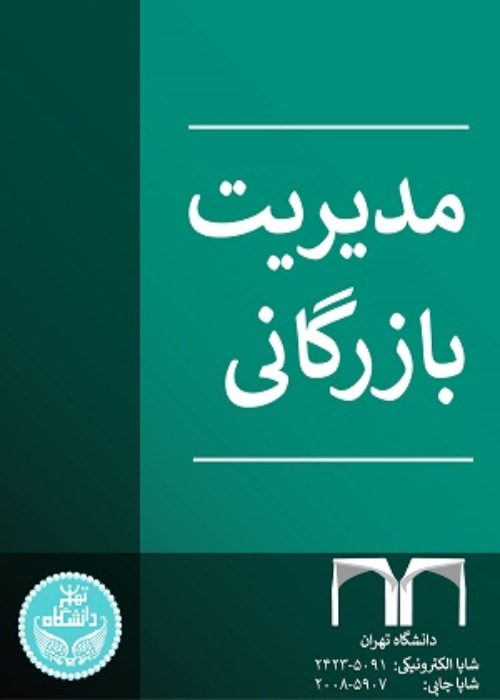Content Analysis of Business Cooperatives Theories Emphasizing Network Functions
Author(s):
Article Type:
Research/Original Article (دارای رتبه معتبر)
Abstract:
Objective
As an organizational strategy, networking has a variety of functions for network activists. Such functions begin with the flow of resources and information and finally result in economic benefit for the network members. Accordingly, numerous theories considered business cooperatives in the form of networks and multiple links which is of great importance in perception of network functions and benefits. In fact, companies seek inter-firm cooperatives in order to be able to obtain knowledge resources outside the firm, new technologies or markets, and probable benefits from the joint research and development activities. In addition, companies try to reduce the risks of conducting activities beyond the capabilities of a single firm. Existing theoretical and empirical opinions in the area of networking show that sharing knowledge, improving performance, sharing resources, building trust, clarity, and promoting market status are among networking functions for organizations and companies. Moreover, some theories investigate organizational relationships from economic point of view highlighting resource sharing. Meanwhile, view point and analysis provided by each theory (as a result of the combination of resources and inter-organizational relationships) is different from the others. In this respect, the main objective of the present study is to determine the networking functions from the perspective of six theories including Transaction Cost, Merge and Acquisition (M & A), Resource Dependence Theory, Agency Theory, Resource-Based Theory, and Strategic Alliance.Methodology
The present study is a qualitative content analysis study based on inductive approach. Using snowball and theoretical sampling techniques, 41 articles pertinent to the target theories were selected from 25 journals and analyzed based on qualitative method. Data analysis was initially started by identifying meaning units, and then, by choosing meaning units, coding, forming of subcategories and categories, and extraction of the themes were pursued. To ensure validity and reliability, triangulation and investigator triangulation techniques were used.Findings
Within content analysis approach, following selection of the analysis unit and meaning units, explanatory themes including “obtaining the resources and improving the competitive advantage”, “developing control capabilities and improving management structure”, and “adjusting capacities and diversification” in the firms were identified. The first theme indicates that in order to reduce their costs and obtain competitive advantage in production and marketing, firms tend to apply networking. This theme is highlighted within merger and acquisition viewpoint, whereas agency viewpoint does not consider such a theme. It is also noteworthy that resource dependent theory partly focuses on this theme. The second theme indicates that within networking procedure, firms can enhance their power on scarce resources and reduce the competitiveness through convergent management with network activists. Such a procedure will lead to governance development within the network. “Reduction in competitiveness and governance development” are of utmost importance in this theme. In fact, this theme is applicable within three theories of dependence, strategic alliance, and agency theory. In general, resource dependence theory is much more involved in this theme compared to other theories. The third theme reflects the fact that there are some extra capabilities in some organizations and firms which are intact in production and service providing processes. On the other hand, some firms lack necessary capabilities to retain their own part in the market. Therefore, it is crucial to balance such capabilities through the analysis of inside conditions and inter-relationships between the firms. It means that the activists tend to evaluate their capabilities and their competitors and active allies in the market to build and diversify their relationships. Accordingly, diversification is considered as the main by-product of balancing capabilities. Diversification occurs in two different levels of activist and resources. In fact, organizations and firms attempting to gain new resources, to find other institutional allies so as to ensure future capacities and to reduce uncertainties by balancing capabilities. This theme includes diversification through networking, relationship analysis, and internal-external capabilities analysis which are equally shared among different theories. In general, the results showed that some theories of relationship and networking are merely economic-based, while others are multi-dimensional encompassing issues of transactions and activist diversity. Moreover, merge and acquisition theory and resource dependence theory can explain networking functions more appropriately.
Conclusion
Keywords:
Language:
Persian
Published:
Quarterly Journal of Business Management, Volume:11 Issue: 39, 2019
Pages:
3 to 24
magiran.com/p1937689
دانلود و مطالعه متن این مقاله با یکی از روشهای زیر امکان پذیر است:
اشتراک شخصی
با عضویت و پرداخت آنلاین حق اشتراک یکساله به مبلغ 1,390,000ريال میتوانید 70 عنوان مطلب دانلود کنید!
اشتراک سازمانی
به کتابخانه دانشگاه یا محل کار خود پیشنهاد کنید تا اشتراک سازمانی این پایگاه را برای دسترسی نامحدود همه کاربران به متن مطالب تهیه نمایند!
توجه!
- حق عضویت دریافتی صرف حمایت از نشریات عضو و نگهداری، تکمیل و توسعه مگیران میشود.
- پرداخت حق اشتراک و دانلود مقالات اجازه بازنشر آن در سایر رسانههای چاپی و دیجیتال را به کاربر نمیدهد.
In order to view content subscription is required
Personal subscription
Subscribe magiran.com for 70 € euros via PayPal and download 70 articles during a year.
Organization subscription
Please contact us to subscribe your university or library for unlimited access!


